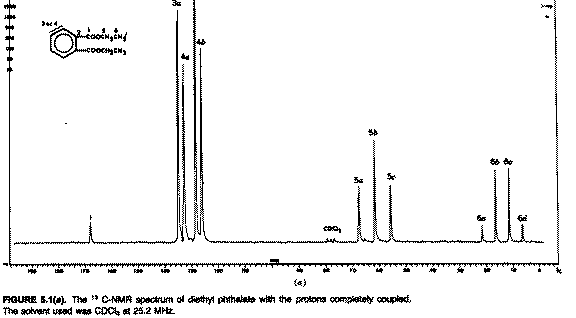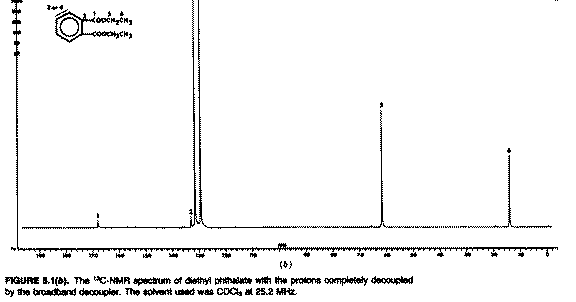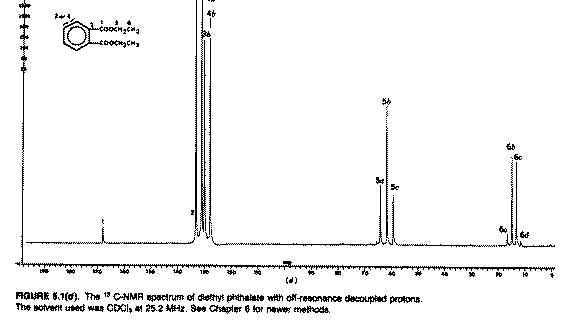What does decoupling mean in NMR?
1 Answer
Decoupling is the simplification of an NMR spectrum by irradiating the sample with radio-frequencies to remove the splitting caused by protons.
Explanation:
It is especially important in
Coupled Spectra
The
These splittings are much larger than in
The spectra are more complicated and harder to interpret if the signals are close together.
The spectrum of diethyl phthalate, for example, shows the

Broadband Decoupling
In a "normal"
They "flip" between energy states so fast that the
The spectrum of diethyl phthalate reduces to a single peak for each of the six types of carbon atom.

The advantage of decoupling is that it gives a cleaner spectrum, as carbon signals are often close for complex molecules, and fewer peaks mean less overlap.
However, you lose the splitting information that can be helpful in assigning peaks.
Off-Resonance Decoupling
In off-resonance decoupling, the decoupling frequency is set at a distance from the proton frequency and the decoupling power is reduced.
The carbon nuclei see a small perturbation from the protons.
The spectrum of diethyl phthalate still shows doublets, triplets, and quartets, but the


